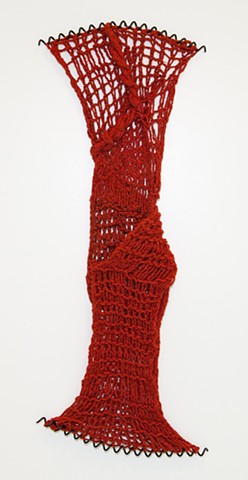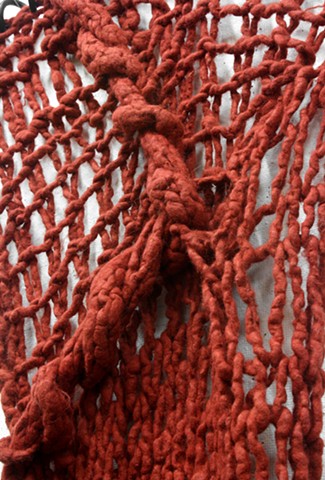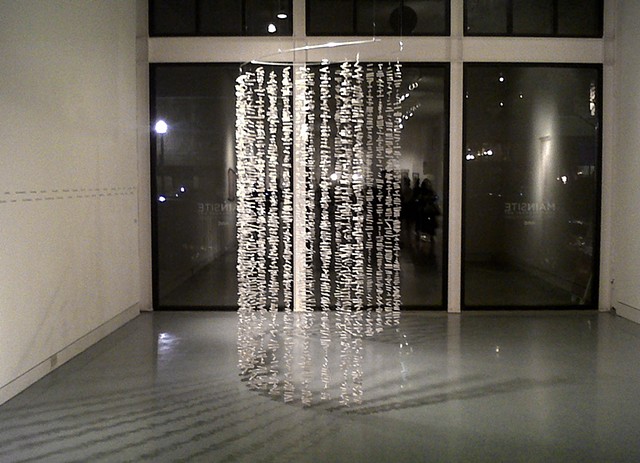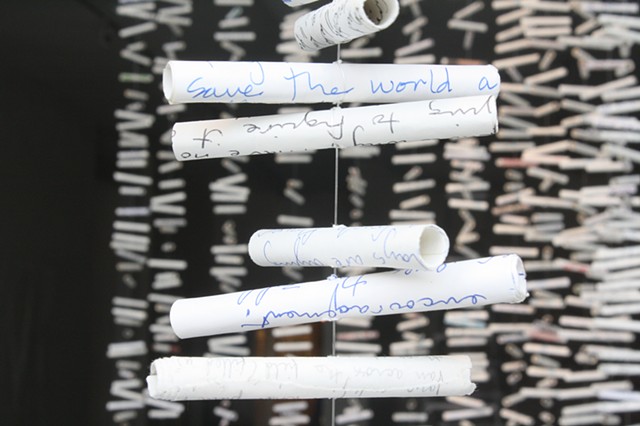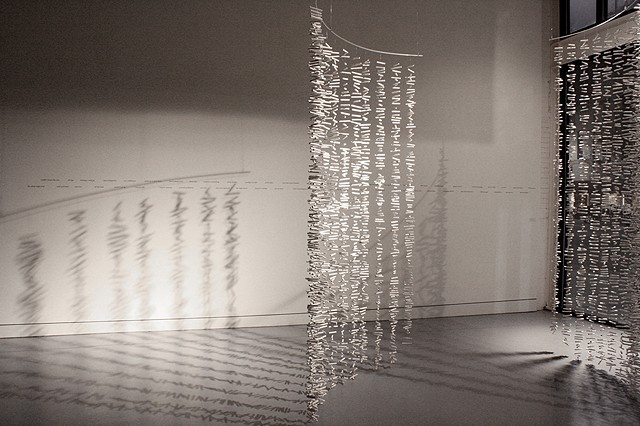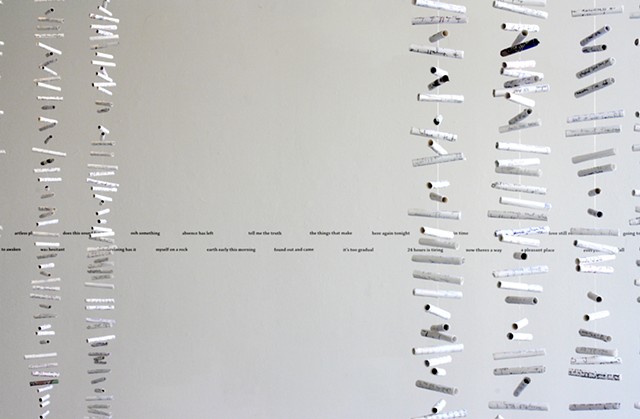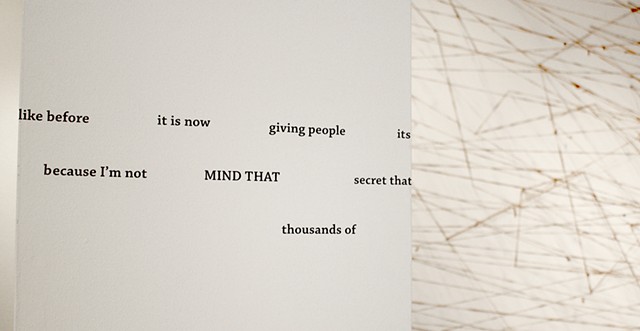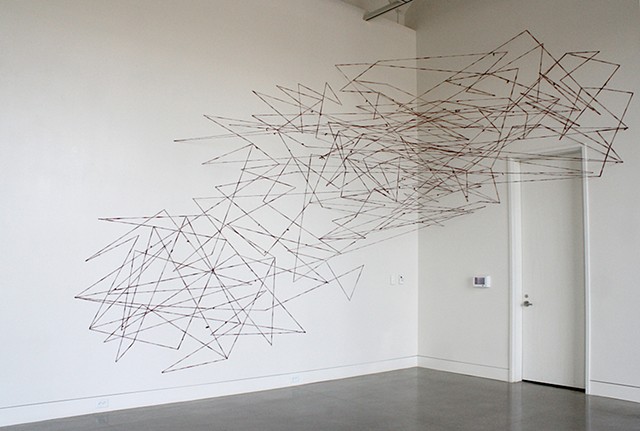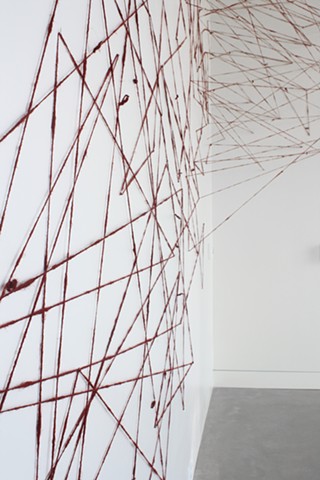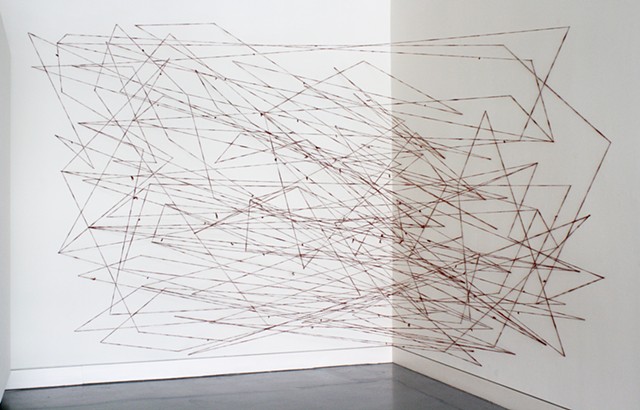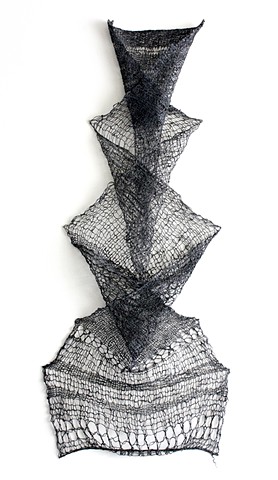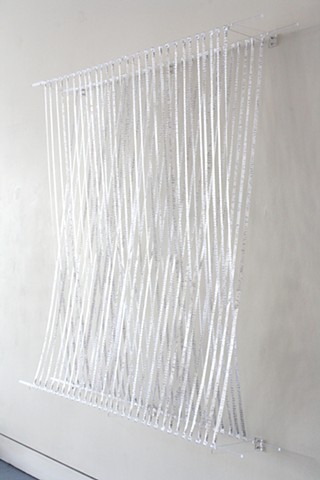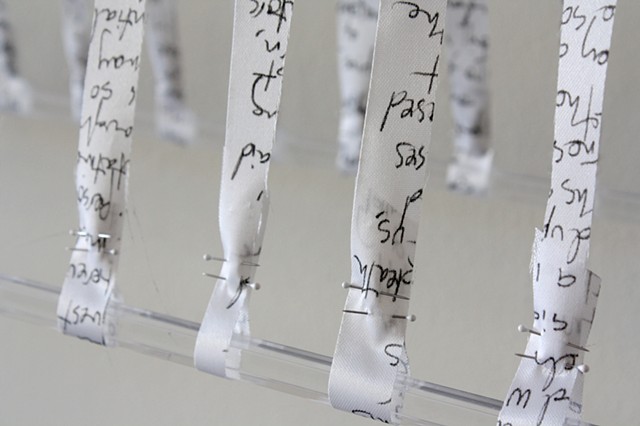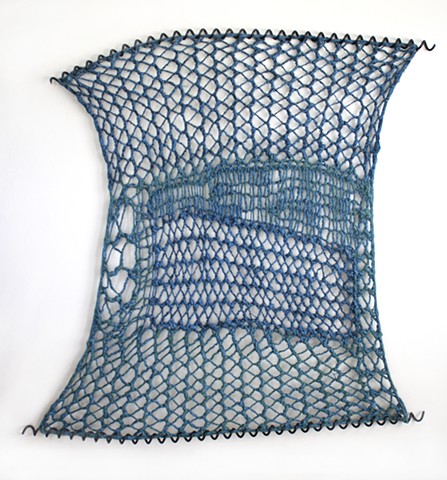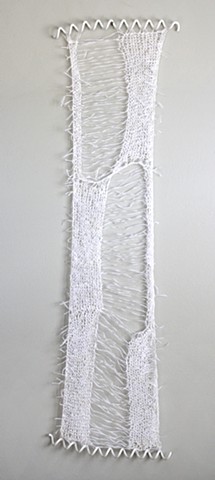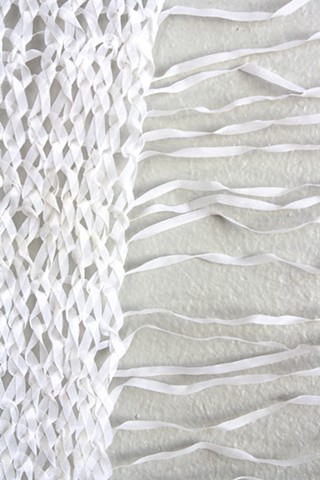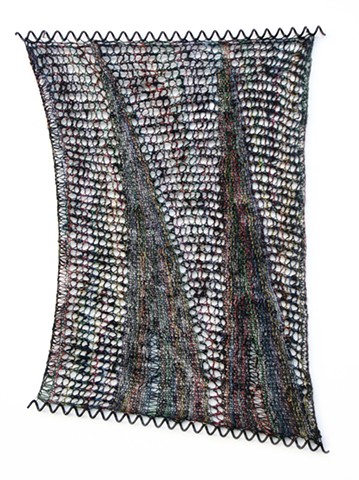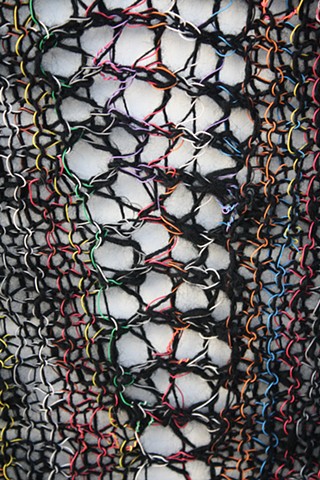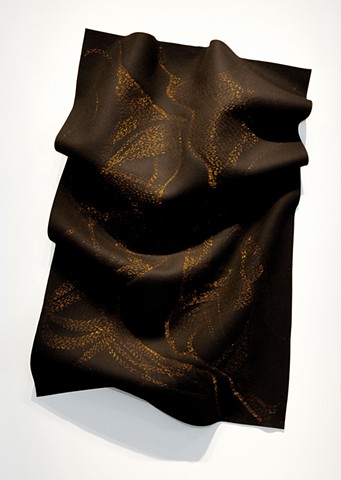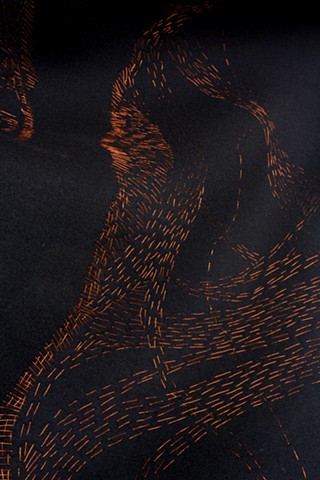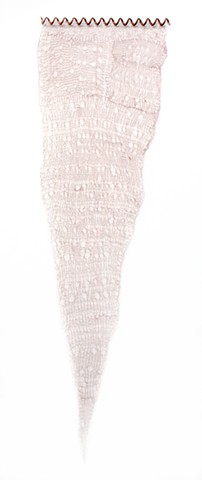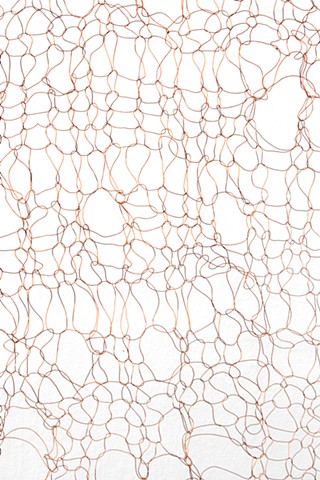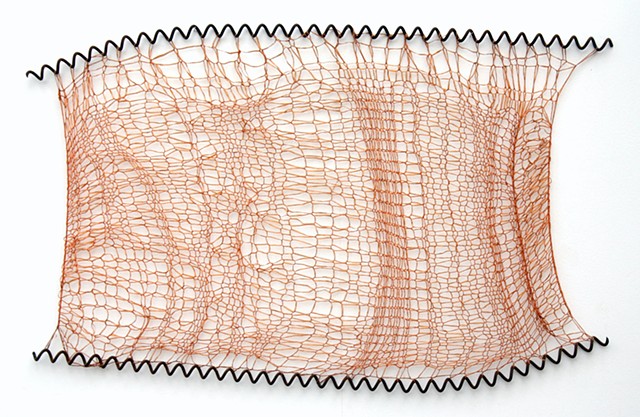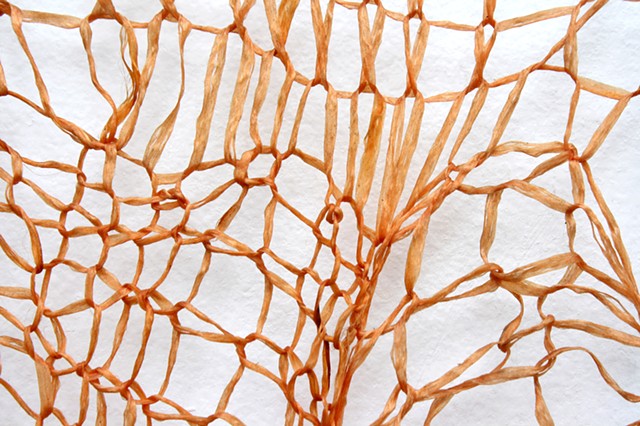lines of language/ language of lines
manifestation of lines
physical expression
private and public stories
preserved, rearranged
reordered
revealed- concealed
universal
embodied in language
Curator Statement, for the Norman Individual Featured Artist 2012 Award by Sarah Jesse
The exhibition Lines of Language/Language of Lines features the recent textile works of Heather Clark Hilliard. As the title hints, the objects explore a connection between visual and linguistic communication. To Hilliard, stitches represent words, just as rows of them signify sentences. She also refers to the format of each work as a scroll. In Hilliard’s alphabet though, loops of wire and knots of wool replace letters as tools to send messages. The exhibition documents Hilliard’s investigation of this metaphor and invites the viewer to consider how the artist communicates meaning beyond language.
Through complex processes of spinning, knitting, stitching and felting, Hilliard creates deceivingly uncomplicated works that reward a viewer’s careful examination. Up close, reclaimed telephone wire and industrial iron coils contrast with the delicacy of the yarn in which they are entwined. The handmade quality of the work is palpable, as no two openings in the loose knit patterns look exactly alike. Rich textures and subtle gradations of color also come into focus. In turn, the viewer becomes aware of the artist as an alchemist who exploits the properties of natural and botanical dyes for aesthetic gain.
Beyond a rich formal appreciation of the work is Hilliard’s more conceptual aim—communication through the manipulation of materials. In Drop It, she connotes the idea of miscommunication or lack thereof by literally dropping stitches. As a result, large swathes of the nylon ribbon seem precariously on the verge of completely unraveling with one touch. Through her treatment of the material, Hilliard offers a visual symbol for the consequences of obstructing information.
The work is not totally absent of text in the more traditional sense though. The site-specific project Conjoint consists of Hilliard’s will, which she wrote onto white satin ribbon that was then cut into long strips, arranged in two layers and passed through each other. In Archives: I Have Just One Thing to Say, Scroll #10 Hilliard rips pages of journals and rolls them and stitches them into long tassels. While the viewer may discern bits and pieces of the text, the overall meaning is obscured and without context. By abstracting and concealing the original sources, Hilliard infuses universality in objects of obvious personal significance.
There is an undeniable intimacy to the work—both in terms of the personal content, and the sheer time-consuming processes of creating each object by hand. But the work transcends the specificity of Hilliard’s biography and instead examines more general ideas related to communication.
